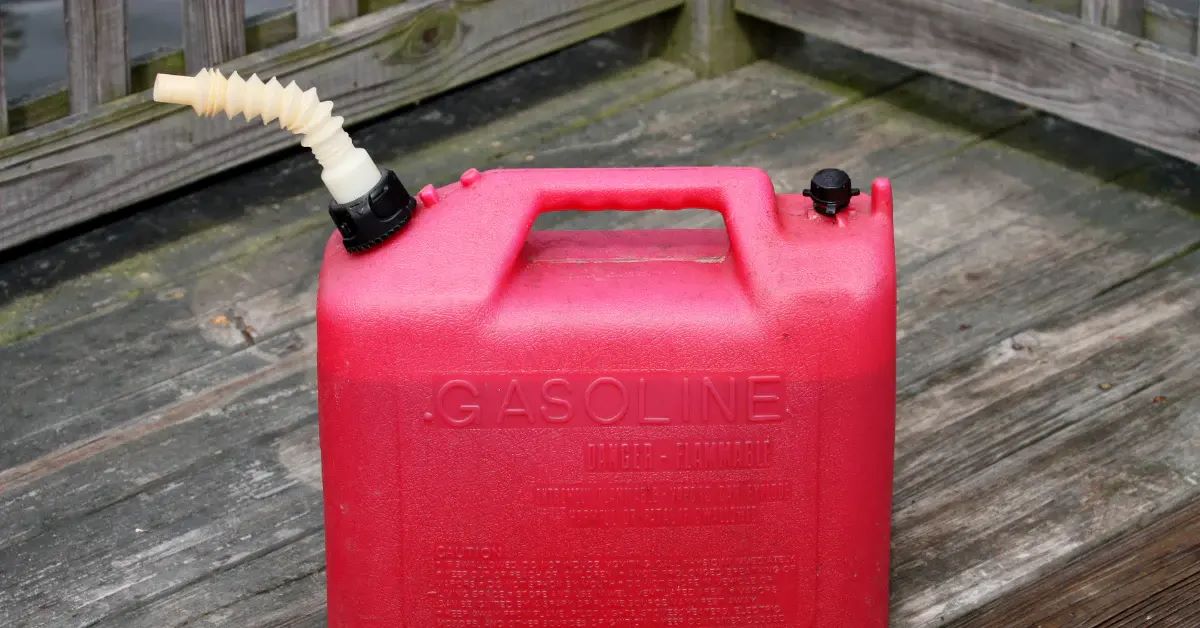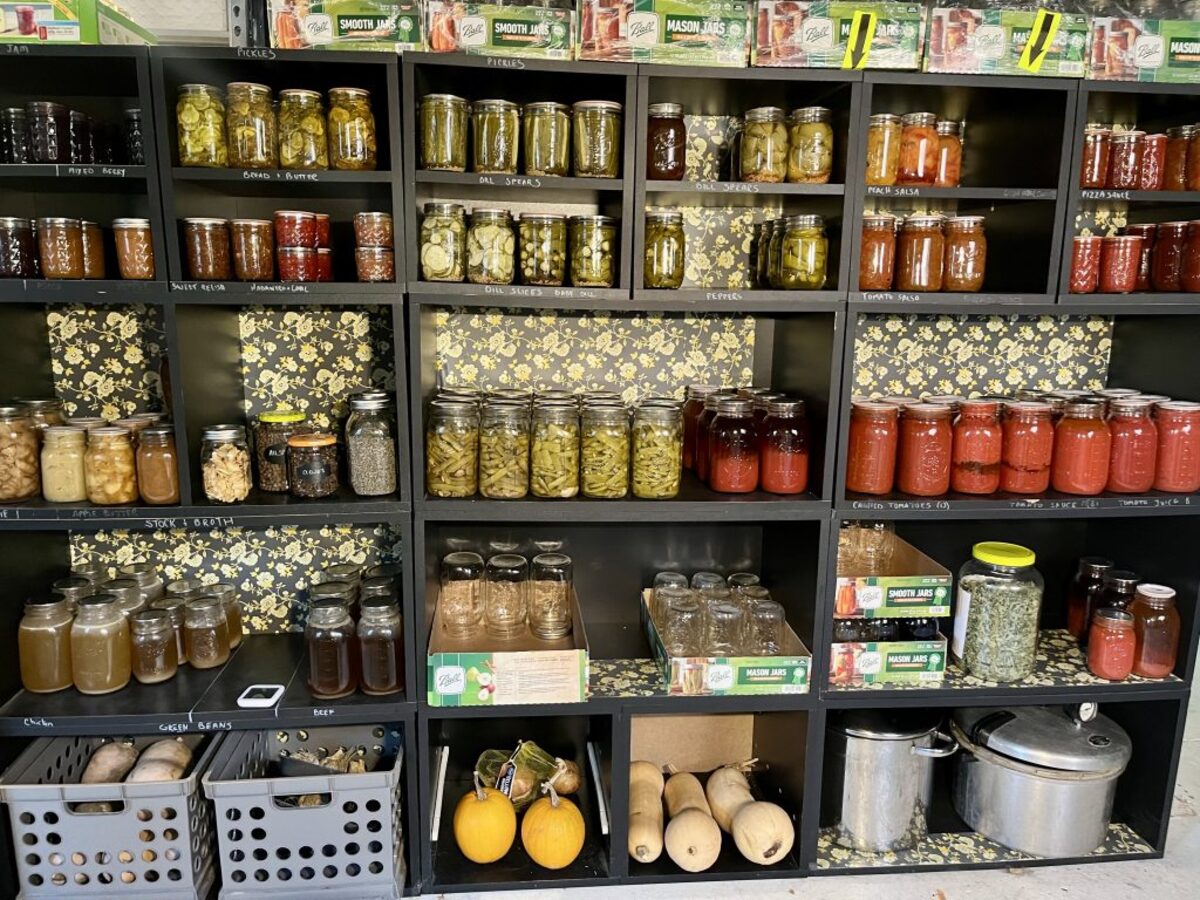

Articles
How To Store Gasoline Long Term
Modified: December 7, 2023
Learn effective tips and guidelines for safely storing gasoline long term in this informative article. Keep your fuel supply secure and reliable.
(Many of the links in this article redirect to a specific reviewed product. Your purchase of these products through affiliate links helps to generate commission for Storables.com, at no extra cost. Learn more)
Introduction
Properly storing gasoline is crucial for ensuring its longevity and safety. Whether you’re storing gasoline for emergency purposes, fueling small engines, or maintaining a backup supply, understanding how to store gasoline long-term is essential. In this article, we will explore the importance of proper gasoline storage, the selection of suitable containers, choosing the optimal storage location, preparing gasoline for long-term storage, tips for safe storage, regular inspection and maintenance, and the proper disposal of gasoline.
Gasoline, also known as petrol, is a volatile and flammable liquid that poses serious safety risks if mishandled or stored improperly. It is composed of various hydrocarbons which can degrade over time, leading to reduced engine performance or even engine damage if used in this state. Additionally, gasoline can release harmful vapors that are not only hazardous to health but can also cause fire or explosion if exposed to an ignition source.
By following proper storage techniques, you can ensure that your gasoline remains usable and safe for an extended period. This includes selecting the right container, finding an appropriate storage location, preparing the gasoline for storage, and conducting regular maintenance and inspections to prevent any potential risks.
In the following sections, we will delve into the details of each aspect of proper gasoline storage, equipping you with the knowledge necessary to effectively store gasoline for the long term.
Key Takeaways:
- Proper gasoline storage is crucial for safety, fuel quality, cost savings, emergency preparedness, and environmental protection. Selecting the right container, finding the optimal storage location, and regular maintenance are key to long-term storage success.
- Responsible gasoline storage, maintenance, and disposal are essential for safety, fuel quality, and environmental protection. Adhering to local regulations, proper preparation, and safe disposal practices contribute to a safer and cleaner environment.
Read more: How To Store Eggplant Long Term
Understanding the Importance of Proper Gasoline Storage
Proper gasoline storage is essential for several reasons, including safety, maintaining fuel quality, and ensuring its usability over an extended period. Let’s discuss why it is crucial to store gasoline correctly.
1. Safety: Gasoline is a highly flammable substance. Storing it incorrectly can lead to accidents, fires, or even explosions. By following proper storage guidelines, you minimize the risk of such incidents and ensure the safety of yourself and those around you.
2. Fuel Quality: Gasoline can degrade over time due to exposure to air, moisture, and other environmental factors. When the quality of gasoline deteriorates, it can result in engine performance issues, including problems with starting, idling, or stalling. Proper storage helps preserve the quality of gasoline, ensuring that it remains usable and effective when needed.
3. Cost Savings: Storing gasoline for a more extended period provides cost savings by allowing you to take advantage of lower fuel prices or stock up during times of scarcity. By preserving the quality of stored gasoline, you avoid the need to dispose of old fuel or run into engine problems, saving money on potential repairs and replacements.
4. Emergency Preparedness: Properly stored gasoline is crucial during emergencies such as power outages or natural disasters when access to fuel may be limited. Having a reserve supply of gasoline ensures that you can operate generators, fuel small engines, or travel if necessary.
5. Environmental Protection: Storing gasoline correctly also minimizes the risk of spills and leaks, reducing the chances of soil and water contamination. By preventing environmental damage, you contribute to the preservation of ecosystems and promote a sustainable environment.
Understanding the importance of proper gasoline storage reinforces the need to adopt best practices when storing this potentially hazardous substance. The next section will guide you on selecting the right container for gasoline storage.
Selecting the Right Container for Gasoline Storage
Choosing the appropriate container for gasoline storage is crucial for maintaining its integrity and minimizing safety risks. Here are some key factors to consider when selecting the right container:
1. Material: Opt for containers made of high-density polyethylene (HDPE) plastic, which is resistant to gasoline and prevents leaks or corrosion. Avoid using containers made of materials such as metal, glass, or low-density polyethylene (LDPE), as they may react with gasoline or compromise its quality.
2. Capacity: Determine the amount of gasoline you need to store and select a container with a size that accommodates your needs. It is advisable to have multiple smaller containers rather than one large container, as it allows for easier handling and reduces the risk of the fuel going bad due to extended storage times.
3. Sealability: Look for containers with tight-fitting caps or lids that create a reliable seal. This prevents evaporation, reduces the risk of fuel contamination, and helps maintain the quality of the gasoline over time.
4. Durability: Ensure that the selected container is sturdy and durable to withstand the impact of storage conditions and handling. A well-constructed container lessens the risk of accidental spills or leaks, protecting both the fuel and the surrounding environment.
5. Safety Features: Consider containers with additional safety features such as flame arrestors or pressure relief valves. These features help prevent the ignition of gasoline vapors and reduce the risk of explosions.
6. Compliance: Check local regulations and guidelines to ensure that the selected container meets the necessary standards for gasoline storage. Different regions may have specific requirements regarding the design and safety features of storage containers.
Once you have chosen an appropriate container, ensure that it is dedicated solely for gasoline storage and not used for any other purposes. Label the container clearly to differentiate it from other fuel sources or hazardous substances.
Now that you understand the key factors for selecting the right container, let’s move on to the next section to discover the optimal location for gasoline storage.
Finding the Optimal Storage Location
The location where you store gasoline plays a vital role in maintaining its safety and quality. Here are some essential considerations when finding the optimal storage location:
1. Ventilation: Choose a well-ventilated area for gasoline storage to minimize the build-up of flammable vapors. Avoid storing gasoline in enclosed spaces or near open flames, sparks, or sources of heat that could ignite the vapors.
2. Temperature and Sunlight: Gasoline should be stored in a cool, dry place away from direct sunlight or extreme temperature fluctuations. Exposure to heat and sunlight can accelerate the evaporation process, degrade the fuel quality, and increase the risk of a fire hazard.
3. Fire Safety: Select an area that is far away from potential fire hazards, such as electrical equipment or open flames. It is advisable to store gasoline outside of residential or occupied structures, such as the garage or house, to minimize the risk of accidents.
4. Accessibility: Ensure that the storage location is easily accessible, allowing you to quickly and safely access the gasoline when needed. Avoid placing heavy objects or clutter around the containers, as this may hinder access or increase the chances of accidental spillage.
5. Compliance with Regulations: Familiarize yourself with local regulations governing gasoline storage. Ensure that the chosen storage location meets any specific requirements, such as distance from wells, water sources, or property boundaries.
6. Secure and Elevated: Store gasoline in a secure location that is out of reach of children or unauthorized individuals. If possible, consider storing the containers on a raised platform or shelf to prevent contact with the ground and minimize the risk of contamination or accidental spills.
7. Organization: Keep the storage area well-organized to easily identify and access the gasoline containers. Proper labeling and clear visibility of the containers will facilitate efficient inventory management and reduce the risk of confusion or misplacement.
By finding the optimal storage location that considers these factors, you can maintain the safety and quality of the stored gasoline. In the next section, we will discuss how to properly prepare gasoline for long-term storage.
Preparing Gasoline for Long-Term Storage
Properly preparing gasoline for long-term storage helps maintain its quality and usability over an extended period. Follow these steps to ensure your gasoline is ready for storage:
1. Use Fuel Stabilizer: Adding a fuel stabilizer to the gasoline before storage helps prevent the degradation of the hydrocarbons and keeps the fuel stable. Follow the manufacturer’s instructions for the correct amount of stabilizer to use based on the fuel quantity.
2. Fill the Containers: Fill the storage containers as close to their maximum capacity as possible to minimize the amount of air and moisture in the container. This reduces the chances of oxidation and water absorption, which can degrade the quality of the gasoline over time.
3. Tightly Seal the Containers: Ensure that the containers are tightly sealed to prevent the entry of air, water, or other contaminants. Make sure that the caps or lids are securely fastened to create a proper seal that minimizes the evaporation of the gasoline.
4. Store in an Upright Position: Keep the containers in an upright position to prevent leakage. Avoid laying them horizontally, as this can increase the risk of spills or leaks and compromise the integrity of the containers.
5. Store Away from Flames and Ignition Sources: Place the containers in a storage location away from any potential ignition sources, such as open flames, sparks, or electrical equipment. This ensures the safety of the stored gasoline and minimizes the risk of fire accidents.
6. Limit Air Exposure: Limit the exposure of the stored gasoline to air by avoiding unnecessary opening and closing of the containers. Frequent exposure to air can result in increased oxidation and evaporation, leading to the degradation of the fuel quality.
7. Regularly Rotate Stored Gasoline: If you anticipate long-term storage of gasoline, consider rotating it periodically by using the older stored gasoline and replenishing it with fresh fuel. This ensures that you always have usable fuel and prevents the gasoline from becoming stale over an extended period.
8. Keep Storage Area Clean: Maintain a clean storage area free from debris, dirt, or any potential contaminants. Regularly inspect the area and containers for any signs of damage or leakage, and address them immediately to prevent any safety or quality risks.
By following these preparation steps, you can maximize the shelf life of gasoline and ensure that it remains usable and safe for an extended period. In the next section, we will provide additional tips for safe gasoline storage.
Store gasoline in a cool, well-ventilated area, away from direct sunlight and sources of heat or ignition. Use approved containers and add a fuel stabilizer to extend its shelf life.
Read more: How To Store Batteries Long Term
Tips for Safe Gasoline Storage
Ensuring the safe storage of gasoline is of utmost importance to protect yourself, others, and the environment from potential hazards. Here are some essential tips to follow for safe gasoline storage:
1. Observe Local Regulations: Familiarize yourself with local regulations and guidelines concerning gasoline storage. Different regions may have specific rules regarding the types of containers, storage quantities, and distances from residential areas or water sources.
2. No Smoking or Open Flames: Absolutely no smoking or open flames should be permitted near the storage area. Gasoline vapors are highly flammable and can ignite from even the smallest spark or flame. This includes avoiding the use of lighters, matches, or any other potential ignition sources.
3. Keep Away from Children and Pets: Store gasoline in a secure location that is out of reach of children and pets. Accidental ingestion of gasoline or exposure to its fumes can lead to serious health consequences. Lock the storage area or use childproof latches if necessary.
4. Proper Ventilation: Ensure that the storage area is well-ventilated to prevent the build-up of flammable vapors. This helps dissipate any fumes and reduces the risk of a fire or explosion. Avoid storing gasoline in confined spaces or basements.
5. No Electrical Equipment: Do not store gasoline near electrical equipment or outlets. Gasoline vapors can be ignited by sparks or electrical malfunctions. Keep gasoline containers away from any potential sources of electricity to minimize the risk of accidents.
6. Use Proper Labels: Clearly label gasoline containers with the word “Gasoline” or “Petrol” to prevent confusion and accidental ingestion. Use labels that are easily readable and durable, ensuring they will remain legible over time.
7. Avoid Overfilling Containers: Do not overfill gasoline containers. Leave some space at the top to accommodate thermal expansion. Overfilled containers may burst or leak when exposed to changes in temperature.
8. Clean Up Spills Immediately: In the event of a gasoline spill, clean it up immediately using absorbent materials, such as cat litter or sand. Dispose of the contaminated materials properly according to local regulations. Do not wash gasoline spills down the drain or into nearby water sources.
9. Regularly Inspect Containers: Regularly inspect gasoline containers for any signs of damage, leakage, or deterioration. If a container shows any signs of wear or damage, replace it immediately to prevent any potential accidents or fuel contamination.
10. Keep Fire Extinguishers Accessible: Have a working fire extinguisher nearby in case of emergencies. Make sure you know how to use it properly. In the event of a fire, evacuate the area immediately and contact emergency services.
By following these tips, you can ensure the safe storage of gasoline and minimize the risks associated with its handling and storage. In the next section, we will discuss the importance of regularly inspecting and maintaining your gasoline storage containers.
Regular Inspection and Maintenance of Gasoline Storage
Regularly inspecting and maintaining your gasoline storage containers is essential for ensuring their integrity, preventing leaks, and minimizing safety risks. Here are some key steps to follow for regular inspection and maintenance:
1. Visual Inspection: Conduct a visual inspection of the containers on a regular basis. Look for any signs of damage, such as cracks, dents, or rust. Inspect the seals, caps, and lids to ensure they are in good condition and creating a proper seal.
2. Check for Leakage: Check for any signs of leakage around the containers or on the surface where they are stored. If you notice any gasoline odors or discoloration, it may indicate a leak. Address any leaks immediately to prevent further damage or potential hazards.
3. Monitor Fuel Levels: Keep track of the fuel levels in your storage containers. Regularly check and rotate the stored gasoline to ensure that it remains fresh and usable. Discard any old or contaminated fuel according to local regulations and replace it with fresh gasoline.
4. Clean the Containers: Regularly clean the exterior of the containers to remove dirt, debris, or any potential contaminants. Use mild soap, water, and a soft cloth to clean the containers, ensuring that no residue is left behind.
5. Maintain Ventilation: Ensure that the storage area remains properly ventilated to minimize the build-up of flammable vapors. If ventilation systems are present, inspect and maintain them regularly to ensure proper airflow.
6. Inspect Storage Area: Check the storage area for any signs of damage, such as structural issues, water leaks, or potential fire hazards. Address any issues promptly to maintain a safe and secure storage environment.
7. Recordkeeping: Keep a record of maintenance and inspections, including dates and any actions taken. This documentation helps track any changes or issues that arise over time and allows for better management of the storage containers.
8. Follow Manufacturer’s Recommendations: Follow any specific maintenance recommendations provided by the container manufacturer. Different containers may have specific guidelines for maintenance and upkeep, so it is important to adhere to them.
9. Replenish Supplies: Periodically check your inventory of absorbent materials, cleaning supplies, labels, and other necessary equipment. Ensure that you have an adequate supply of items needed for maintenance and emergency spill response.
By regularly inspecting and maintaining your gasoline storage containers, you can identify and address any issues promptly, ensuring the longevity of the containers and minimizing the risk of accidents or fuel deterioration. In the final section, we will discuss the proper disposal of gasoline.
Proper Disposal of Gasoline
Properly disposing of gasoline is essential to protect the environment and prevent potential hazards. Due to its flammable and hazardous nature, gasoline should never be disposed of in regular trash or poured down drains or sewers. Here are some guidelines for the proper disposal of gasoline:
1. Contact Local Authorities: Check with your local waste management or environmental agency to inquire about specific guidelines and disposal options for gasoline in your area. They can provide information on local collection centers or hazardous waste facilities that accept gasoline.
2. Gasoline Donation or Exchange Programs: Some organizations or community centers may have programs in place to accept unused or unwanted gasoline for reuse. Contact local community organizations or fire departments to see if they participate in such programs.
3. Use Approved Disposal Containers: If you need to dispose of a small amount of gasoline from a container, transfer it into an approved disposal container. These containers can be obtained from local waste management facilities. Ensure that the container is tightly sealed to prevent leaks.
4. Never Mix with Other Waste: Never mix gasoline with other waste materials or household chemicals. Doing so can create hazardous reactions or increase the risk of fires or explosions. Keep gasoline separate from other substances during disposal.
5. Avoid Evaporating Gasoline: Do not attempt to evaporate gasoline by leaving it in an open container. This can release flammable vapors and pose a significant fire hazard. Proper disposal methods should be followed to ensure the safe handling and elimination of gasoline.
6. Transport Safety: When transporting gasoline for disposal, follow local regulations and guidelines regarding transportation safety. Place the gasoline in approved containers and secure them properly during transit to prevent spills or leaks.
7. Professional Disposal Services: In some cases, it may be necessary to enlist the services of professional hazardous waste disposal companies. These companies have the expertise and resources to handle and dispose of gasoline safely and in compliance with environmental regulations.
8. Educate Others: Educate family members, neighbors, and friends about the proper disposal of gasoline. Promote responsible environmental practices and encourage others to dispose of hazardous substances safely.
By following these guidelines, you can ensure the proper and safe disposal of gasoline, protecting both the environment and human health. Remember to always prioritize safety and compliance with local regulations when dealing with the disposal of hazardous materials like gasoline.
As we conclude, it is crucial to recognize the importance of responsible gasoline storage, maintenance, and disposal. By implementing these practices, we can mitigate risks, preserve fuel quality, and contribute to a safer and cleaner environment.
Conclusion
Proper storage, maintenance, and disposal of gasoline are vital for ensuring safety, preserving fuel quality, and protecting the environment. By following the guidelines outlined in this article, you can effectively store gasoline for the long term and minimize potential hazards.
Understanding the importance of proper gasoline storage is the first step in ensuring its safety and usability. Selecting the right container, finding the optimal storage location, and preparing the gasoline for storage are crucial aspects to consider. By using suitable containers made of high-density polyethylene (HDPE) plastic, storing gasoline in well-ventilated areas away from ignition sources, and using fuel stabilizers, you can maintain fuel quality and prevent accidents.
Furthermore, regular inspection and maintenance of gasoline storage containers are essential to identify any damage or leaks, while proper disposal of gasoline ensures environmental protection. By adhering to local regulations, contacting local authorities for disposal guidelines, and utilizing approved disposal containers, you can safely dispose of gasoline without harming the environment or risking accidents.
Remember to prioritize safety at all times when handling gasoline. Avoid smoking and open flames near storage areas, keep gasoline out of reach of children and pets, and maintain proper ventilation to prevent the build-up of flammable vapors.
By implementing these practices, we can store gasoline responsibly, maintain fuel quality, protect our surroundings, and contribute to a safer and cleaner environment. Responsible gasoline storage benefits not only ourselves but also future generations.
Always stay informed about local regulations and guidelines, and consult appropriate authorities for specific advice pertaining to gasoline storage and disposal. By acting responsibly, we can ensure the safe and efficient use of gasoline, both in emergencies and as a regular fuel source.
Frequently Asked Questions about How To Store Gasoline Long Term
Was this page helpful?
At Storables.com, we guarantee accurate and reliable information. Our content, validated by Expert Board Contributors, is crafted following stringent Editorial Policies. We're committed to providing you with well-researched, expert-backed insights for all your informational needs.















0 thoughts on “How To Store Gasoline Long Term”